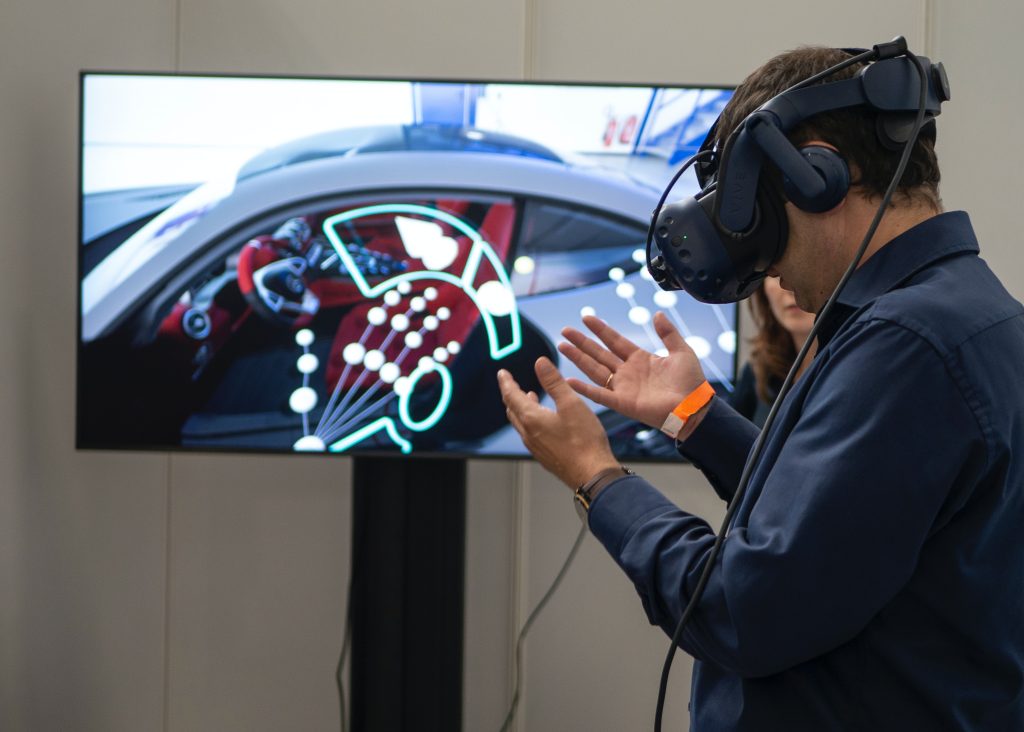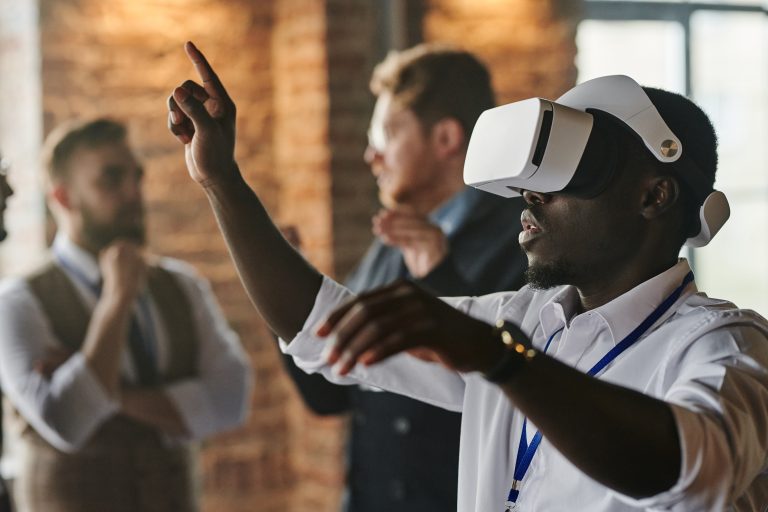In season two of the Netflix series, Space Force, the characters played by Jimmy O. Yang and John Malkovich offer a glimpse into what adoption of the Metaverse in everyday offices might look like. During a virtual meeting with SpaceX, the two characters have polar opposite reactions to donning virtual reality headsets for their meeting. While Yang’s young adult character loves the VR experience, Malkovich endures some uncomfortable side effects.
This scene probably isn’t far off from what will happen in offices across the country as digital natives and non-natives react to the rise of virtual reality. Like any innovation, the Metaverse may offer huge opportunities to some industries, while in others it may turn out to be little more than a passing fad.
To help you understand what businesses like yours can expect from the Metaverse, we’ve outlined what it really is, how adoption might occur and its influence in the everyday workplace.

What is the Metaverse, exactly?
Although there has been a lot of talk about the Metaverse recently, most people still don’t know what it really is or how it might impact their life. To put it simply, the Metaverse provides people with an immersive sensory experience through a collection of technologies. The Metaverse offers people a new way to have first-hand experience – both for entertainment and professional development. And you can do it all without necessarily interacting with them in-person.
Virtual reality (VR) headsets are the technology most often associated with the Metaverse. The headset provides sight and sound sensory experiences, while gloves or controllers provide haptic feedback for a tactile experience. Surgeons in training use VR to experience a procedure before entering the operating room and NASCAR drivers use it to review their footage and analyze how they could have improved.
The Metaverse is already around us
The technology we interact with on a daily basis is a precursor to the Metaverse. Smartphones, tablets and even video game controllers have gradually amplified sensory technology to improve user experiences.
When you press the screen on your smartphone to like a text from a friend, you’re using a feature that reacts to the amount of pressure you’re applying to the screen. This pressure-sensitive technology adds another layer of immersion to text-based conversations—allowing you to convey specific actions like laughter or affirmation.
Sensory technology is not only used to improve digital communication – car manufacturers have also been using these technologies to help build safer vehicles and reduce accidents. If you bought or leased a new car recently, you may have noticed the lane detection system vibrating your steering wheel. That vibration simulates the familiar feeling of driving over a rumble strip, so drivers know if they’re drifting between lanes.
Haptic feedback can be found in all kinds of contemporary technology. Nintendo Switch game controllers react to the player’s positioning while smartwatches tap users on the wrist as a reminder to stay active. Televisions even incorporate ambient lighting, which reacts to the environment by automatically brightening or dimming to reduce eye strain and create a better viewing experience.
These features have helped prepare people to immerse themselves in the Metaverse, but most workers aren’t yet donning VR headsets in the office. Although the Metaverse has not yet been adopted on a massive scale, industries like healthcare and engineering are at the forefront of this technology. These industries offer a glimpse into how the Metaverse can be used across the professional world.
What is the role of the Metaverse in the professional world?
Skills training, technology advancement and collaboration are a few areas where the Metaverse is truly likely to drive innovation. Engineers, for instance, could come together in the Metaverse to collaborate more effectively regardless of their location. In fact, BMW is already doing this, according to Accenture. Through the Metaverse, BMW employees conduct training, connect with others across the globe and work together to improve factory technology.
Another area where the Metaverse can drive progress is workplace training, particularly for complex, high-pressure and potentially dangerous situations. Surgeons, emergency responders, construction workers and more can immerse themselves in the dangerous scenarios they’re likely to encounter on the job. The fully immersive environment of the Metaverse enables users to learn without risk to themselves or others.

KGO’s Team can help prepare your people and workplace for the changing metaverse technology
How can businesses leverage the Metaverse in everyday tasks?
So where does the Metaverse fit in for your business? There are plenty of opportunities for the Metaverse to appear in the daily lives of workers, no matter what the industry. In the Project Management and Commercial Real Estate (CRE) realm, 3-dimensional (3D) capture can be used to provide a virtual experience of the physical space. This allows users to essentially ‘walk-through’ the space from anywhere that has a computer, VR headset, or handheld device/controller. Each user experience can also be varied based upon their needs. An architect, for example, can have a different view than the AV/IT crew.
Office functions can also benefit from using the Metaverse, as it offers new avenues for training, problem-solving and team-building. The Metaverse can be deployed to recruit staff and give them a feel for the physical office space, or drive sales through virtual tours or demonstrations. As a rapidly growing technology, there are certainly opportunities that have yet to be explored. Taking this into account, it is becoming increasingly important to plan and build for flexibility in your office space to allow room to grow as technology does. Space for those with VR headsets and controllers, or interactive software will help you stay on top of the recent technology trends.
How can KGO help your business adapt to the Metaverse?
Just as the growth of hybrid work models has driven businesses to reconfigure work spaces to serve new functions, businesses will need to think about their spaces differently to accommodate work in the Metaverse. KGO can help your business make space in the virtual world and identify the best technology for your journey into the Metaverse.